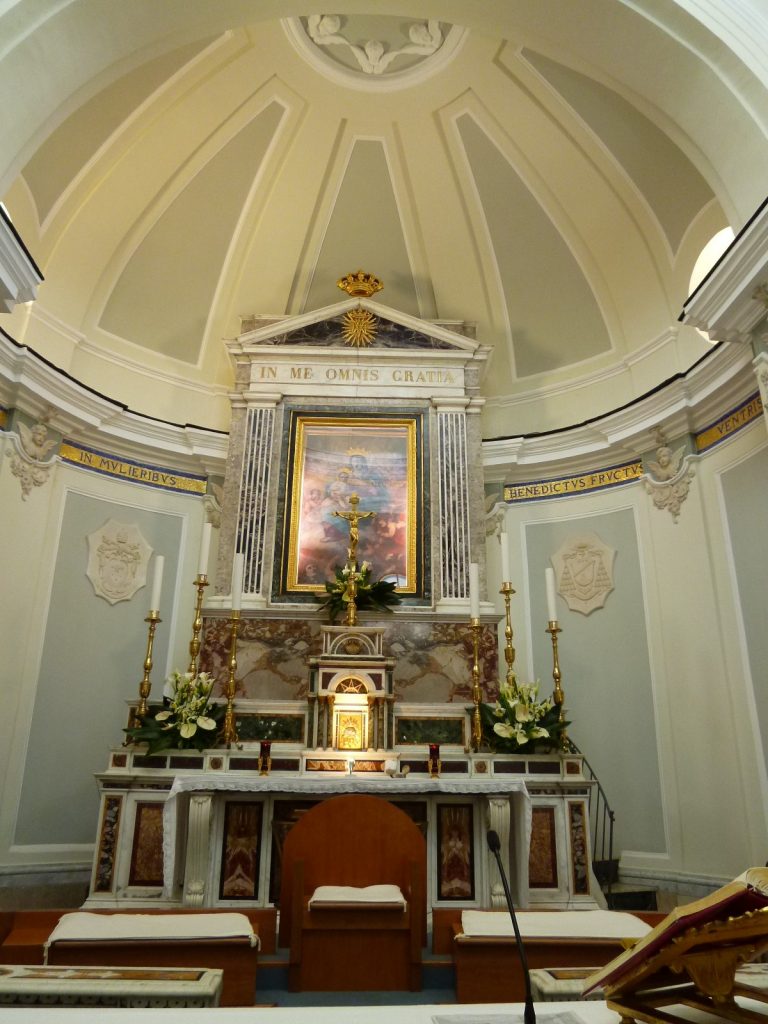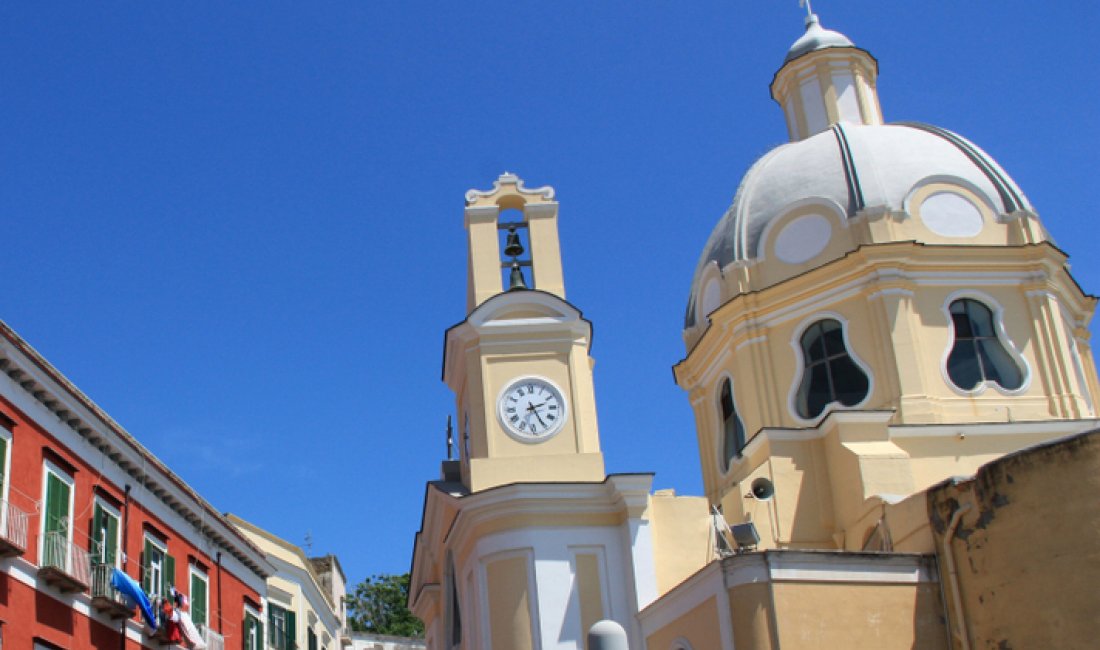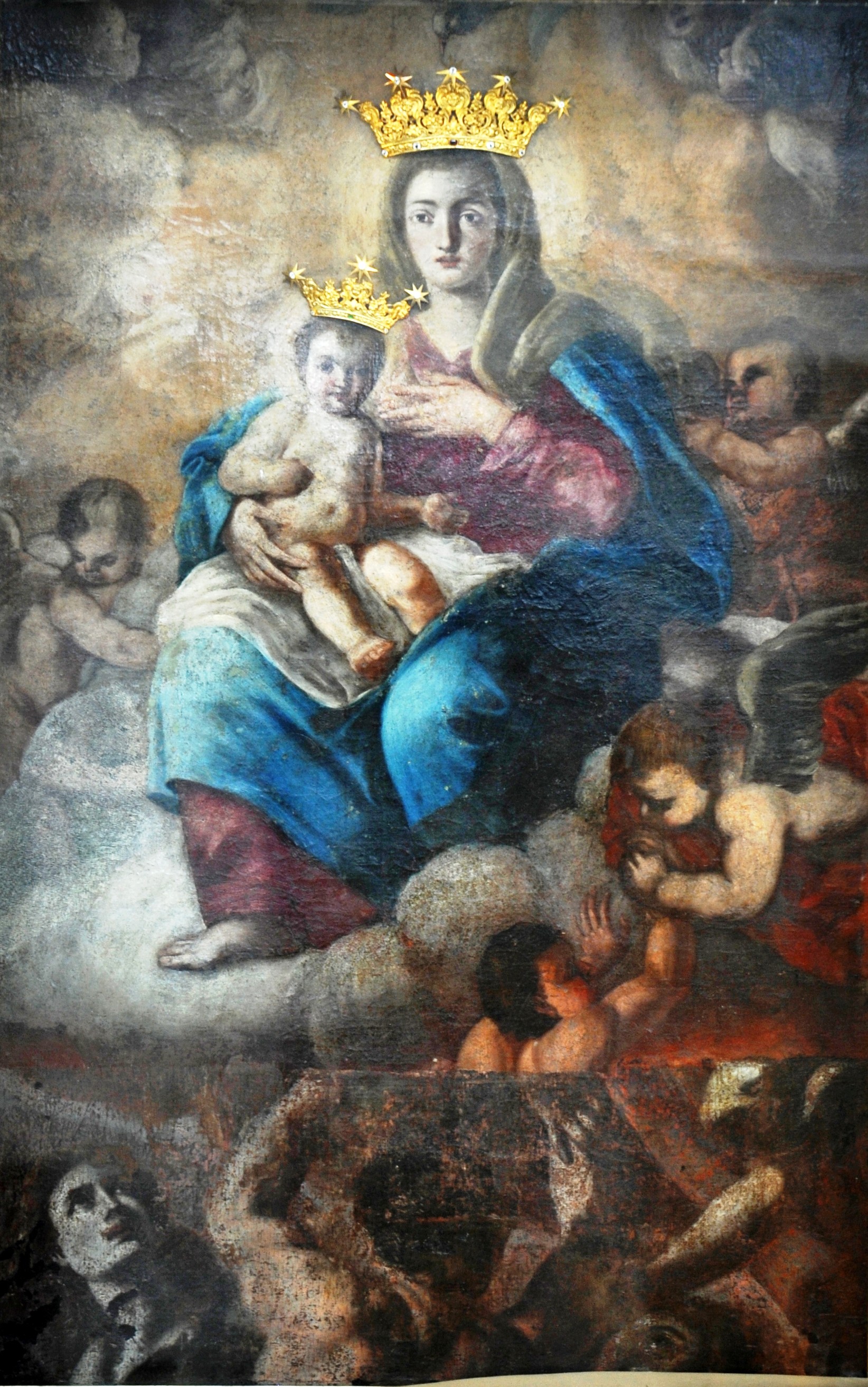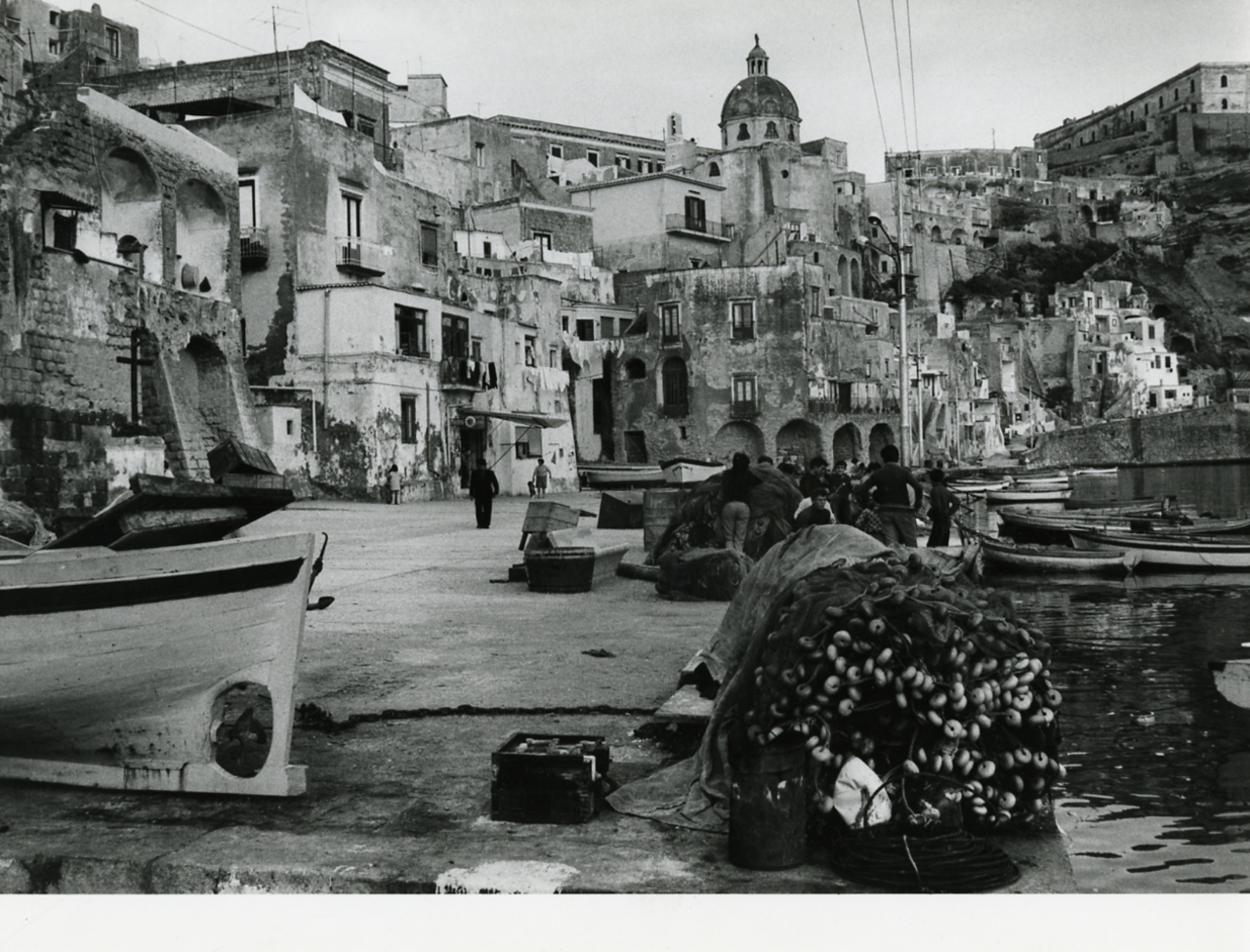The Santuary of Santa Maria delle Grazie Incoronata

The Santuary of Santa Maria delle Grazie Incoronata rises close to the splendid inlet on Marina Corricella, the fishing village, and overlooks the historic square of "Sammarezio", the Piazza dei Martiri of 1799, where the twelve procidani, victims of the repression against the Republic Neapolitan, were hanged.

As we read in the "History of Procida" by Michele Parascandolo, the first historical news date back to 1521, when a small chapel was located at the foot of the climb leading to the Terra Casata (or Murata). Inside, among candelabra some hanging vows and a whale’s coast, was venerated "a cona of table" on which the Virgin was painted.

The Church was enlarged in 1600, but there was not enough height for the building of a dome because the Barons of Iorio, who lived in the opposite tower, prevented him to have a better view of the sea and the island. The particular geographical configuration of the Church requested new transformations; its majestic dome between the sky and the sea, was raised in 1928.

In the church you can admire four altars.
The oldest altar, located on the right and dated 1732, is that of the Crucifix, powerful wooden sculpture of unknown author; on the left is the one dedicated to St. Joseph, topped by a painting dating back to 1900. The current high altar, made of selected marbles and with a valuable ciborium, was consecrated on 26 June 1863. In 1866 was built the altar on which today is exposed the picture of the young martyr St. Maria Goretti; it was originally dedicated to the Blessed Virgin of Salette, when the cult of the Apparitions of the Virgin in the homonymous French little town was in full fervor.

The last altar, dating back to 1867, is dedicated to St. Francis of Assisi: an ancient canvas (probably the oldest of those on display) portrays the seraphic patriarch at the time of his death. The Church was among the privileged for "the purchase of the Indulgence" called "della Porziuncola", as can be seen from a plaque of 1881.

In the sacristy you can admire the clothing, solid and artistic work of marquetry sor-rentino dated 1890, performed by Gaetano Lauro who handed down the figures of Salvatore and Bernardino Albano (collectors) and Luigi Perillo (bursar). In 2015 it was restored, at the expense of the Parish and the faithful, by the firm MP Restauro of Portici with the supervision of the Superintendence.

On the apse wall reigns the wonderful canvas of the Virgin (original image probably 1500, current image dating in-certain) which in 1854 was embellished by the Procidani with a mantle of gold and silver in thanks for the escaped danger from the wave of cholera that had struck the Kingdom of Naples.

The canvas has been repainted several times. Taking into account the chromatic vivacity of the Virgin’s clothing with the solution of the head covered by the mantle, the color of the complexion and the perfect oval of the face with very softened features (characteristics of the Mediterranean beauty), some argue that it could be the work of a student of Luca Giordano (M.A. Pavone).

After the restoration in 1998, the covering and the various repaints were removed. The intervention showed the partial representation of another hand much greater than that previously visible. Every year the mantle, hooked on a plexiglass window, is back on display in July, which is dedicated to Our Lady of Grace.

The devotion of the Procidani towards Our Lady of Grace has always existed; the month of July is the month of Our Lady, it is the month of Graces: an "irresistible" call pushes to run to Our Lady.

There are many faithful who, alone or in groups, stop at "Semmarezio" to refresh their spirit on the heart of the Mother; they transform this small church into a real cathedral of prayer and praise, and undoubtedly constitute a "sign of God".

The main feast is the "Visitation" whose anniversary, for the devotees procidani, remains strongly rooted, in the heart and in the mind, at the date of July 2nd, despite in the liturgical calendar is celebrated on May 31st.

A memorable date in the history of the church is "the Coronation" of August 10th, 1924, when a solemn Pontificale presided over by Cardinal Alessio Ascalesi was celebrated; on the sacred image (the Mother and the Child) were affixed, with pontifical mandate, two crowns in pure gold set with numerous diamonds, by Master Goldsmith Vincenzo Miranda.

The chroniclers of the time write that for the three consecutive days, prior to Sunday, August 10th, the sacred rite was announced not only to the population of the "grancia", but to the entire island community with the festive sound of the bells of all the churches.

In 1925 the Church was erected as a Parish, while on April 10, 1930, by decree of Cardinal A. Ascalesi, it was erected as a diocesan Marian Sanctuary attached to the Basilica of St. Mary Major in Rome with the attached special indulgences.
Map: The Santuary of Santa Maria delle Grazie Incoronata
Address: Piazza dei Martiri, 1, 80079
Procida (NA) Campania
Latitude: 40.761910358805885
Longitude: 14.031123518943785
Site: https://www.sanleonardoprocida...
vCard created by: gerardo
Currently owned by: gerardo
Type: Building
Function: Church
Creation date: 27-04-2022 11:11
Last update: 28/04/2022